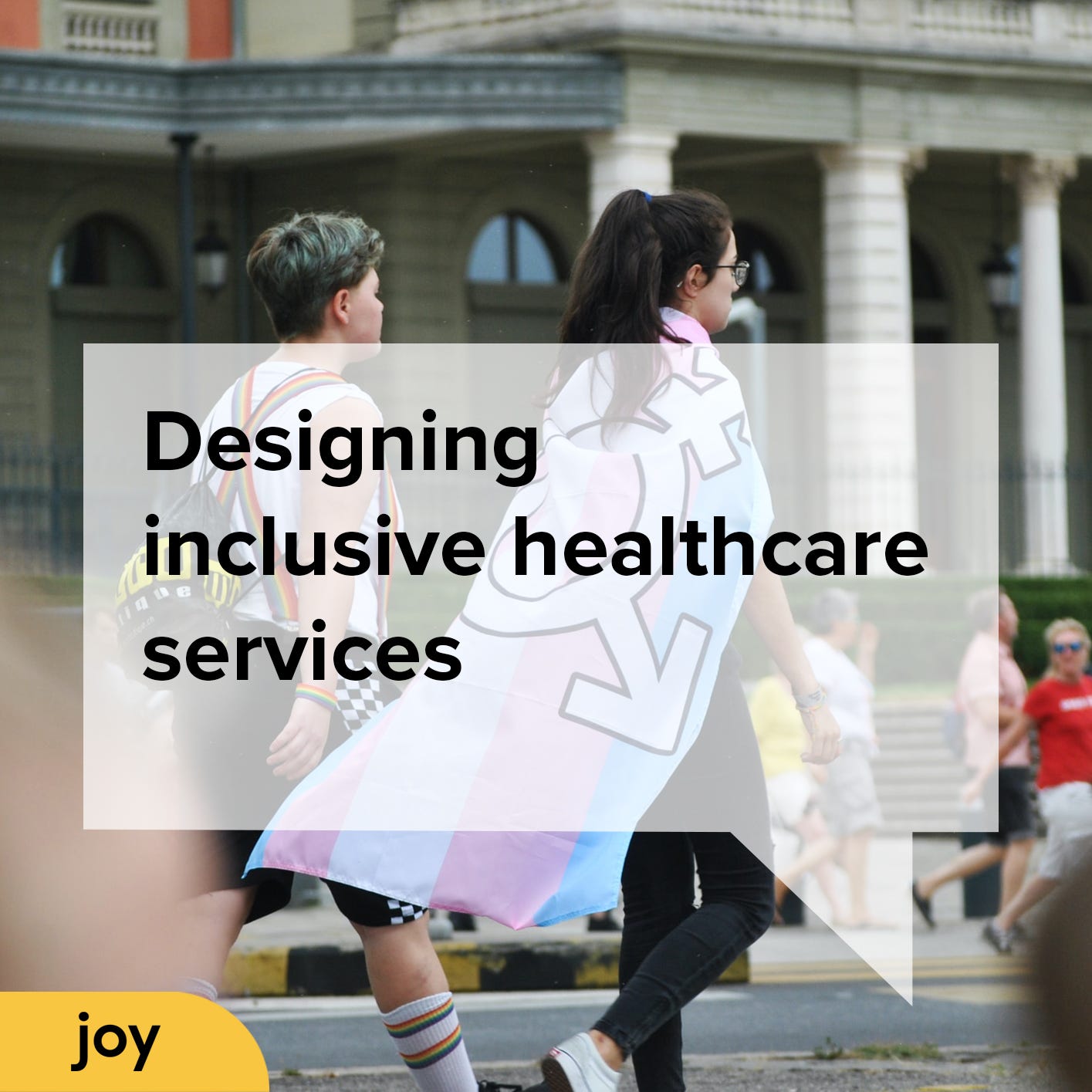Designing inclusive healthcare services
With a focus on designing for people of any sex or gender
Last week Lee Brown and I delivered a talk at UX Healthcare on designing inclusive healthcare services, with a focus on designing for people of any sex or gender. It’s the follow up talk to my Let’s talk about sex talk. It’s something I’ve been wanting to do for a while now and I’m pleased the opportunity came about.
The thing I enjoyed most was collaborating with Lee. Lee and I have never met in person. He actually reached out to me when I was having a difficult time with the healthcare system in my personal life. Because of his background working in and around patient inclusion, we got to talking.
This coincided with a tweet I put out asking people what they’d like to hear from my talk. That tweet resulted in a few conversations with peers and trans people I know. It got me thinking and made me realise that in order to deliver this talk well I needed to collaborate with someone with lived experience. I’m really grateful Lee agreed when I asked.
Feeling more confident
It was interesting doing this talk and observing how I felt about my delivery. I’ve delivered my Lets talk about sex talk around 20 times now. I no longer get nervous and have honed the delivery of this over time.
It was heartening to realise how much more confident I felt based on the practice I’ve had over the last year. I’ve written before about how I think having one talk and doing it over and over again can really help with honing delivery. It was good to finally get the opportunity to put this into practice with a new talk.
I noticed I spoke slower, thinking about the delivery of each slide. I looked up to the ceiling less (something I do when I’m thinking) and had less ‘umm’ moments.
The power of combining the personal with the practical
Something else I learned from developing my first talk is that personal stories resonate. The experience I had with the Covid 19 vaccination booking service was the first time I’d connected my family situation, and the fact my Dad is trans, to my work life. Sharing this story really connected with people which was a helpful mechanism for landing my messages.
I knew this was an important aspect to bring through into this talk however I was conscious of the need to move away from centering my story in a talk about the experience of trans people. Lee did a fabulous job of not only weaving in his personal experience but bringing to the talk stories others have shared with him. We also got some great help from the ever brilliant Tash Oakes-Monger who shared a whole host of stories from the media with us.
I also know from my experience with my first talk that people are eager for practical help to do this work. Sadly I can’t ever provide the answer to the question people often ask which is “can you point me to one source that tells me how to ask about sex and gender?” That’s because every use case and every service is different and why it’s important for people to share their own examples of doing this work - which I did in the talk.
Moving the conversation on
The main thing I wanted to land with this talk was the need to move the conversation into a factual space. Trans people are suffering so much at the moment because of the harmful rhetoric in the media. I wanted to explain what the consequences could be if we don’t design services that work for everyone. Healthcare is a helpful space to make this case as I was able to bring in clinical risk.
I’m glad we were able to start this conversation but we want to continue it. Lee and I are eager to share this talk with a wider audience.So if you have an event coming up or a conference you’d love to see us at we’d be keen to hear from you.
In the meantime I’ll point you to this great post on LinkedIn I spotted today about how to be a trans ally.




